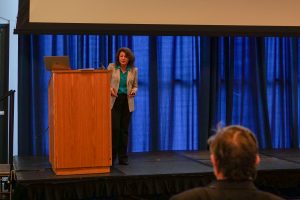Ever since the 5th grade, Lauren Lucido Watkins knew she wanted to be a Bruin. There was no rhyme or reason, nor strong family legacy ties – Lauren was simply drawn to the prestige that came with the name and the energy that radiated from everyone who spoke about the university. Without ever considering a second option, she accepted her offer and graduated from UCLA in 2011 with a BA in Business Economics and a minor in Accounting.

Lauren Lucido Watkins
Lauren has always been a strategic thinker and natural problem-solver. Lauren attributes her first venture into the realm of strategy and consulting as a core member for the Daily Bruin, first working as an intern, moving to internal advertising sales, and ultimately working as the assistant manager during her junior and senior years. In a time where the technological revolution was on the cusp of breaking through, Lauren and other members of the Daily Bruin were tasked with countering the demise of print paper and shift to online news platforms. While figuring out how to generate revenue beyond print and assessing the internal structure of the Daily Bruin, Lauren realized the importance of aligning your team with your business needs. Without a strong people strategy, she knew that business changes couldn’t follow. Lauren followed her passion, which culminated into an internship in Los Angeles with Deloitte Consulting in their Human Capital practice.
Lauren excelled as a top analyst while at Deloitte. She worked in their organization and talent group for two years before being approached by Christian Dior, who at the time was looking for business-minded candidates to take part in their re-launched management training program. Lauren knew that an opportunity in high fashion may not come again, so she decided to take a leap of faith, recognizing a greater end goal, and leave her job at Deloitte. Within a week, Lauren went from being a consultant advising clients, to working the floor at the Christian Dior Boutique on Rodeo Drive learning all facets of the luxury retail landscape. Such a drastic change in environment is no easy feat. Lauren believes her time spent at UCLA working at the Daily Bruin contributed to her successful transition between two very distinct worlds. She draws parallels between working at the Daily Bruin and her first work experiences at Christian Dior, both times in which she was a part of a group of people whose main focus was working as a team to grow the business in a fast-moving environment.
The Daily Bruin was not Lauren’s only extracurricular activity at UCLA. Lauren is a sister of Kappa Alpha Theta, serving as the Internal Social Chair and VP of Membership, and was the Consulting Director of the Undergraduate Business Society during her senior year. In terms of academics, her favorite class she took while at UCLA was Real Estate Investments, taught in tandem with professors and students from the Anderson School of Management. She has used many of the learnings to assess investments in her own life, including purchasing a home in San Francisco.
Upon transitioning to Christian Dior, Lauren spent one year in Beverly Hills focused on client development strategies and was then promoted to Christian Dior’s New York flagship where she was tasked at driving sales and overseeing the shoe department. Fast-forward to present day and Lauren has scaled the corporate ladder, now the Assistant Boutique Manager for the Christian Dior boutique in San Francisco, which she helped to open last year.
As a lover of high fashion myself, I was keen on hearing about how Lauren acquired such a vast knowledge of the high fashion realm in order to be working at one of the powerhouses in the industry. Her advice was to constantly stay active in obtaining knowledge and keeping an eye on the ever-changing landscape of fashion. I also asked her if there was any advice she wished she could say to her college-self. “Be fearless, take risks, and do [things] you’re passionate about.” Lauren reminded us that unless you put yourself out there, you can never truly reap the rewards from all the opportunities in life.
Written by Katie Kim, Undergraduate
Click here to see more Alumni Interviews.







